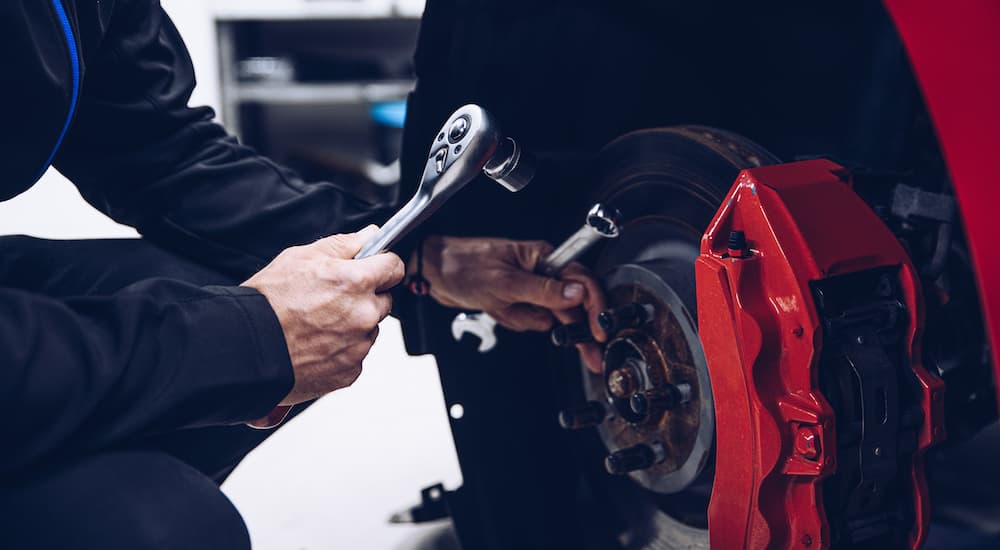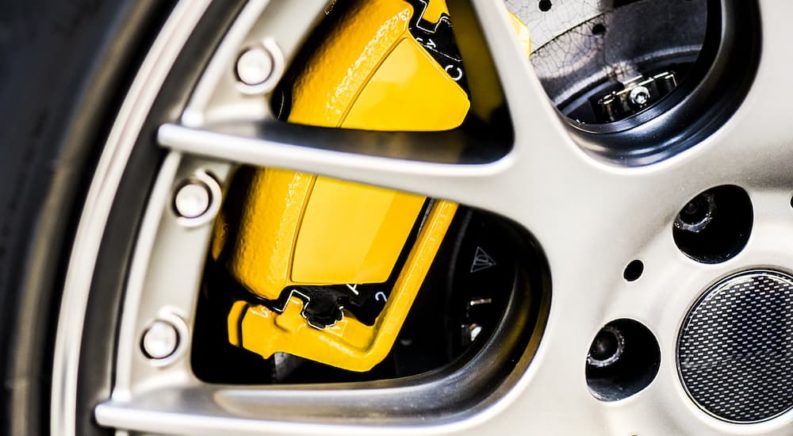Stop and go is just the way our world is running these days. There are a ton of people, and that means that there have to be more red lights and stop signs to keep accidents from happening. One of the most important functions of our vehicles is their ability to stop when we need them to. It’s important to keep your brakes in tip-top shape so that they can perform quick and reliable stops on demand. Our vehicles have a lot of different ways of letting us know that the brakes aren’t working quite as well as they should be. Squeaking or squealing brakes are a good example of this. We always know that our RAV4 is due for Toyota brake service if we start to notice that the brake pedal is vibrating. We do try a little troubleshooting before we take our vehicle in so we can make sure it’s safe to drive into the shop, and that includes checking a couple different things. Whether you get the diagnosis yourself or from a shop, vibration in your brake pedal is likely one of these things.
Unbalanced Tires
This is a really easy thing to check. Anytime you feel any vibration in a car, one of the first places you should check is your tires. Unbalanced and misaligned tires can create a lot of residual road vibration, which can translate into the brake pedal, the driver’s seat, and even the trunk of your vehicle. You’ll know if they’re improperly balanced or not aligned correctly based on how your tire’s tread looks.
Unbalanced tires will have what appears to be sort of random and haphazard tire tread wear. You might notice that there are some patches that are almost entirely worn out, while other places look like they haven’t been touched. If your tires are out of alignment, you’ll notice your tread looks a little different as well. If the inside of your tire is showing wear, but the outer edge is not, then you’ve got an alignment problem. If your tires look like someone took a sander to the outer edges, but the interior portions of the tires are still intact, then you have a different kind of alignment problem, but an alignment problem just the same.
Unbalanced and misaligned tires can produce a vibration in localized spots of your vehicle, or your entire vehicle may be shaky. This is the most straightforward reason behind the shaking when you experience vibration in your vehicle. Fortunately, this is something that is relatively easy to fix. Take your vehicle in for an alignment and balance, and the problem is taken care of! If this kind of all-over vehicle and brake pedal vibration isn’t occurring, your tires look great, and you know everything is nice and balanced like it should be, then you’ll want to look into one of the other reasons behind vibration in your vehicle.

Worn Brake Pads
This is another rather simple check. In fact, most places will do a brake pad check for free. This is a pretty common cause behind a vibrating brake pedal. When you push the brake pedal, the brake pads start putting pressure on the brake rotors, which slows the wheels and stops the vehicle. If your brake pads are worn out or misshapen, then you might experience vibration from them. You may also experience some vibration if your pads are covered in dirt or grime. Those brake pads are the stopping force for your vehicle, so when they are pressing against dirt, you might feel some of that interference in the brake pedal.
Bad brake pads are usually accompanied by an incredibly annoying sound––a sound of the fingernails on a chalkboard variety. This may not always be the case, but if you’re experiencing that vibration and the eerily annoying screeching of ceramic, then you should definitely get your brake pads checked.
Warped Rotors
The rotors are another piece of your vehicle’s braking system that can cause a vibration when they’re not in their best shape. Warped rotors happen all of the time because of the nature of our world and driving. Holding the brakes while going downhill or constantly making really hard and rough stops are a couple ways that your brake rotors may get warped. While often completely necessary, these kinds of braking habits cause your brake pads and rotors to get an uneven grip on each other, which translates to the rotors becoming misshapen.
Your vehicle lets you know its rotors are out of shape because you feel that vibration in the brake pedal. If you think about it, it is sort of like a scratch on a record, where the scratch causes there to be a skip. If you’re too young to remember records, then it’s a lot like when you’re downloading a game on wi-fi while trying to stream your favorite show, and your little brother plays his online video game while mom is googling a new recipe and dad completes a business call. There are too many things going on, so the streaming ability of your internet is no longer seamless, and you get buffering. Basically, the shape of the rotor means that your brakes are only making correct contact some of the time, and you feel those missed times as vibration through the pedal or, in new age terms, as brake buffering.
The good news is that if your brake pedal vibration is caused by warped rotors, you can save them. Depending on how bad your rotors are warped, you can get them machined out to be flat and even again! This makes it a more affordable fix than replacing the rotors.

Malfunctioning Anti-Lock Braking System
Virtually all modern vehicles are equipped with an ABS system. This system is meant to ensure that your tires don’t lock up, and it’s designed to help your vehicle maintain traction in hard braking situations so you can hopefully steer yourself to safety. Sometimes though, these sensors need replacing because the ABS kicks in when it’s not supposed to. This can cause a vibration in your brake pedal because the system will either prevent the brakes from fully engaging or cause your brakes to lock up because the ABS has failed.
This problem is likely to occur due to a dirty or damaged ABS sensor, and because the sensor sits in your braking mechanism, it is a common cause behind a vibration in the brake pedal. If the ABS is causing your brake pedal to vibrate, there will likely be a code on your vehicle that pops up to let you know that the sensor needs to be checked or replaced.
Superman Isn’t Coming to Save You
There’s a scene that always comes to mind whenever we are experiencing some problems with our brakes. Maybe you’ve seen it and will be able to relate to it. When we start to get that vibration in our brake pedal, or we hear screeching when braking, we always think about Superman. We haven’t seen it in a while so forgive us for not knowing the names very well, but there is a scene where the villain’s lady accomplice is careening downhill in a car because her brakes have been cut. Right before a complete and total disaster occurs, Superman swoops in and saves the day.
It would be nice to know that Superman is out there, prepared to personally save us from our untimely demise should our brakes give out, but that’s unfortunately not the reality we live in. So if you’ve found yourself feeling or hearing something that’s not quite right, we encourage you to get your brakes checked. We can’t expect Superman to get to us all, so we’ll all just have to stay on top of our brake maintenance and make sure they stay in working order.

